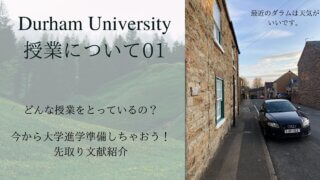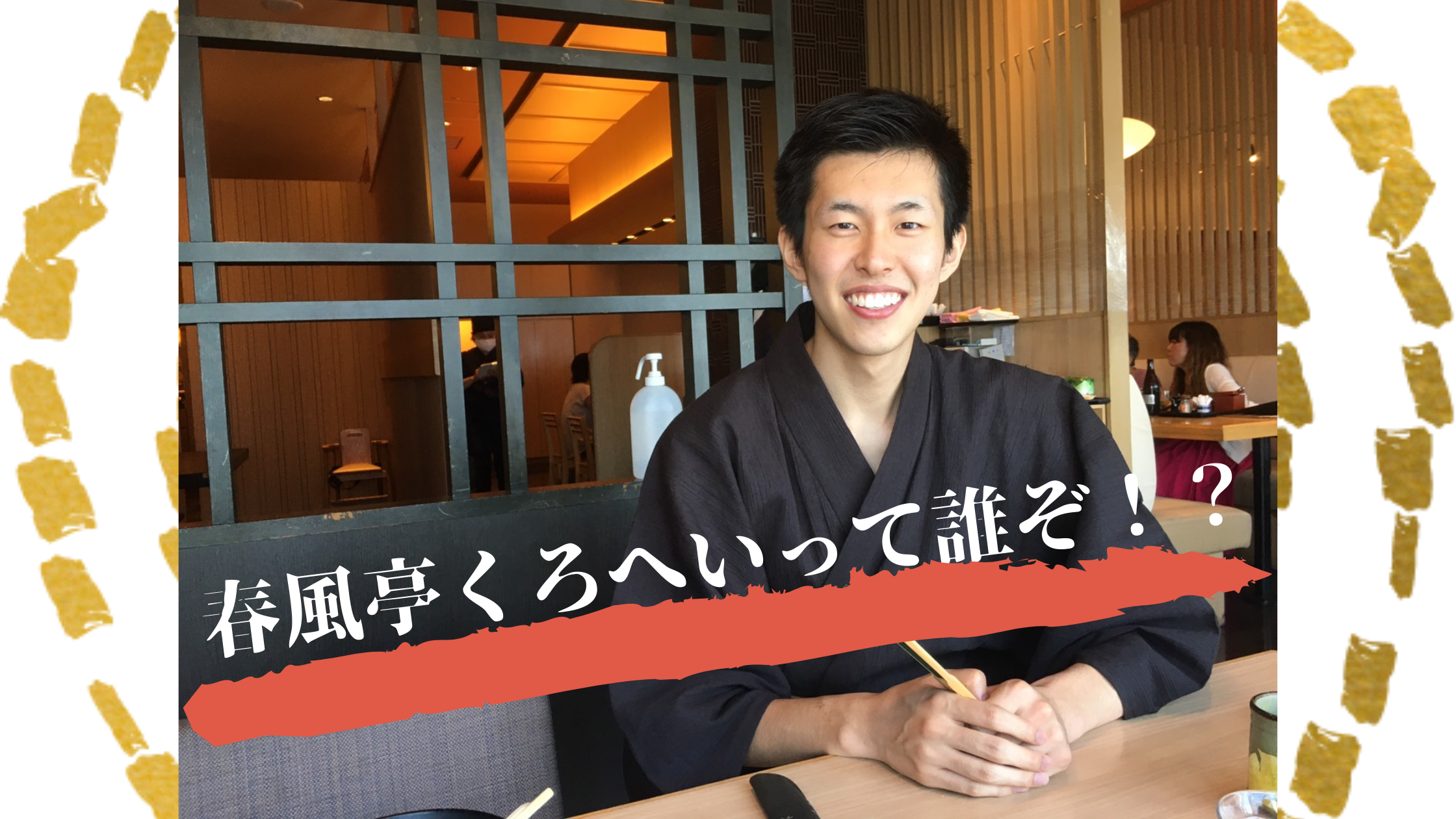Question) Referring to the-sociology-of-childhood theory, critically respond to Kozue Hinatsu’s argument on Spirited Away (2001).
Introduction
Spirited Away (2001) is a film directed by Hayao Miyazaki, a Japanese anime director of Studio Ghibli. An ordinary, ‘ugly’ and ‘sulky’ ten-year-old girl Chihiro accidentally enters the world for Shinto Goddesses. In order to survive, Chihiro works in a Japanese traditional bath house and engages in sex work. In this essay, I will argue against Hinatsu’s (2021) arguments on Spirited Away (2001). Hinatsu (2021) firstly argues that Chihiro’s pure, angelic childhood is violated by Miyazaki. She secondly argues that sexualisation of childhood is morally wrong. I will argue the creation of a pure, angelic, and uncontaminated image of childhood is a social construct. Therefore, the ‘protection of childhood’ is also a social construct. Subsequently, I will argue the ‘lamentation of sexualisation of childhood’ ultimately results in controlling children’s ‘secrets of the self’; therefore, the protection of childhood from sexualisation needs to be reconsidered. I will employ Corsaro’s (1992; 2015) concept of Interpretive Reproduction Model, which is under the sociology-of-childhood-theory, as introduced by Chris Jenks (2005).
Interpretive Reproduction Model explained
In order to accentuate the importance of perceiving childhood as a social construct, I employ an ‘Interpretive Reproduction Model’ as introduced by William A. Corsaro as my framework. Corsaro’s (1992) Interpretive reproduction model is the concept which
perceives children from two perspectives. Firstly, children are regarded as active social agents, who contribute to the society around them. Secondly, children are seen as social beings who are affected by society (Corsaro, 2015). Within the framework of the Interpretive Reproduction Model, Corsaro (2015) argues that children’s actions are socially constructed based on their social role as a generational group, and their positionality in the generational order. As shown, within the concept of the Interpretive Reproduction Model, Corsaro (1992) highlights the importance of socialisation of childhood construction. Corsaro (1992) drew a conclusion that children interact with each other to engage in sense-making, which results in creating their own society.
Corsaro (2015) problematises the behaviourism’s notion of ‘modelling and reinforcement’. Corsaro (1992) points out that the children have been perceived as passive beings due to the behaviourism. Admittedly, the dominant childhood development discourses were dominated by the notion of behaviourism, especially in the 1970s (Corsaro, 1992). Corsaro (1992, p. 160) argues under the behaviourism, children’s language acquisition was explained in a concept of ‘modelling and reinforcement’. Within this concept, children were thought of as a receptacle of language. Children listen, read and stock the language within themselves, and once they have a certain number of words, they start outputting words (Corsaro, 1992). As implied, this concept has a premise, which is putting children as a passive being. This results in ignoring the fact that children interpret, organise, and use information from the environment, and acquire language skills, as well as other social skills (Corsaro, 1992).
Thus, Interpretive Reproduction Model perceives children as social agents who contribute to society through the sense-making of the world by themselves. This means that children also do create their own society, by possessing their agency. Consequently, Corsaro (2015) highlights the importance of perceiving children as active agents in relation to their social positionality within the concept. As discussed, the meanings and the perceptive notion of childhood has varied historically (Corsaro 1997, p. 4; Corsaro, 2015). Therefore, considering childhood as a socially constructed period in relation to other structural categories such as social class, gender, and race is important (Corsaro 1997; James and Prout 1997; Corsaro, 2015).
Additionally, the Interpretive Reproduction Model allows us to shed light on childhood from a different angle because it enables the consideration of children’s agency. Interpretive reproduction model is under the-sociology-of-childhood theory, as suggested by Chris Jenks (Ito, Baumer, Bittanti, boyd, Cody & Stephenson, 2009). Within the framework of the-sociology-of-childhood theory, Chris Jenks (1990) argues that children are perceived as active, creative social agents. Furthermore, children are conceived as social agents who produce their own unique children’s cultures, while simultaneously contributing to the production of adult societies (Jenks, 1990; Ito et al., 2009). Interpretive Reproduction Model and Jenks’ sociology-of-childhood theory acknowledge the fact that children possess certain agency to construct the society, although they are simultaneously affected by the society, such as social positionality, such as gender, class, and race. Thus, with the concept of interpretive reproduction model, Corsaro moves beyond a simple socialisation model in which children are passive recipients of dominant and “adult” ideologies and norms (Corsaro, 2015).
Discussion: Introducing Hinatsu’s argument
Hinatsu’s view towards Spirited Away (2001) is the best example of ‘the theft or violation of childhood’ (Kitzinger, 1988). Hinatsu (2021) argues that Spirited Away (2001) is a morally wrong film. For making this conclusion, Hinatsu accentuates the fact that the film contains the theme of child labour, especially female labour, in the sex industry. Specifically, Hinatsu claims that through Spirited Away, Miyazaki contaminates the innocent girlhood of the protagonist, Chihiro, and the viewers, who are around Chihiro’s age. From the claim, it is possible to argue that Hinatsu posits children as passive beings, which only be affected and contaminated by society.
Furthermore, we can also acknowledge that Hinatsu’s perspective towards Chihiro’s girlhood can be summarised as innocent and angelic. This is evident in her argument, which is problematising ‘the theft or violation of childhood’ and critiquing Spirited Away, which contains the theme of a ten-year-old-girl engages in sexual labour. Hinatsu (2021) argues that children in general are motivated for learning, and passionate learners by nature. For example, she sympathetically introduces the examples of children who could not go to school during the second world war, then concludes that these children are very unfortunate. Hinatsu takes another example of children who were engaging in child labour during the second world war. Referring to this example, Hinatsu argues that these children should have been given the rights to go to school based on the image of Hinatsu’s own children – they are passionate learners, thirst for attending to school.
Here, it is apparent that Hinatsu’s argument does not employ the children’s perspectives. Hinatsu (2021) reasons her own argument based on the image of childhood, which she creates. From these examples, Hinatsu’s argument clearly posits children as coddling children. Thus, Hinatsu perceives children as pure, angelic, uncontaminated (Aries, 1962, p. 131). Hinatsu (2021) argues this theme ‘disorients the healthy development of a ten-year-old girl.’ From this claim, we can ascertain Hinatsu’s argument is based on the premise of protecting childhood from ‘the theft or violation of childhood’.
The claim of ‘the theft or violation of childhood’ needs to be reconsidered within the Interpretive Reproduction Model, because the notion of childhood is a social construct (Corsaro, 2015). Therefore, the notion of ‘violating childhood’, as well as ‘protecting childhood from violation’ is also a social construct. Aries (1962, p. 132) points out the current dominant discourse of childhood is inherited from the two types of childhood theorisations in the seventeenth century; 1) coddling children and 2) children need to be disciplined, rationalised their manners. As stated by Jenks (2006) and Meyer (2007), the image of children as angelic, passive, and uncontaminated by the society, emerged with Romanticism. Meyer argues that Romanticism originated as opposed to modernity. Therefore, Romanticism holds the idea of the distrust of society, which is made by adults. Meyer also argues that Romanticism holds the idea of appreciation of nature and the state of nature. Faulkner (2010) argues, under this social setting, the notion of childhood is placed as opposed to the adults, who established the concept of modernity by destroying nature (Faulkner, 2010). Consequently, this binary perspective of modernity and nature, adulthood and childhood create the concept of
childhood as something which has not yet been contaminated by adults, as well as the modernised society (Thompson, 2018; Scott, 2020).
From the perspective of the Interpretive Reproduction Model, Hinatsu’s understanding of childhood, which is ‘coddling’, is explained as a social construct. As illustrated, Hinatsu’s definition of childhood is based on the socially constructed image of childhood, which is angelic, uncontaminated, and coddling (Aries, 1962). Consequently, the notion of ‘violation of childhood’ is also a social construct. Considering the fact that the concept of childhood as well as the violation of childhood are a social construct, the claim of protecting the innocent childhood is also a social construct. Thus, the claim, ‘protecting the innocent childhood from the theft or violation’ needs to be reconsidered with an interpretive reproduction concept, which perceives children as active social beings (Corsaro, 2015). Therefore, Hinatsu’s claim is the best example of protecting childhood from ‘the theft or violation’ and needs to be reconsidered. In this sense, Hinatsu’s claim lacks the validity.
Since Hinatsu’s argument employs the socially constructed image of angelic children as a premise, Hinatsu’s argument contains a risk of marginalising children who do not fit into the category of ‘coddling children.’ Historically, the children who do not fit into the category below have been marginalised as ‘savvy children’ or ‘knowing children’, since the seventeenth century (Aries, 1962, p. 132). If we theorise children in a term, such as ‘innocent, angelic and yet to be uncontaminated’, we ultimately cannot shed light onto the different aspects of childhood. This results in marginalising and demonising the children who do not fit into the category of ‘yet to be uncontaminated’ (Corsaro, 2015).
In a case of Hinatsu’s argument, Hinatsu silences the main aim of Spirited Away (2001), which is to empower the knowing girls’ girlhood. Miyazaki officially mentions that Spirited Away features the girls who involves in sex work. They are initially shy; however, through the communications with their customers, they take back the courage to interact with others. As officially advocated, the main feature of Spirited Away is the empowerment of the girls (Suzuki, 2018). Hinatsu’s main argument is to protect child and girlhood which is not yet to be contaminated.’ For example, Hinatsu’s arguments against the plot of Spirited Away that the engagement of Chihiro’s sexual work is on the basis of the concept, which perceives childhood as ‘innocence’ and accordingly the protection of a ‘natural’ state of pure girlhood (Morgan and Taylor, 2019). This means, Hinatsu’s claim also homogenises the girlhood, which creates additional exclusions of the children who do not fit into the category of the homogenised girlhood. Thus, Hinatsu’s claim needs to be reconsidered, as it lacks the validity.
Furthermore, Hinatsu did not consider how childhood is created by capitalist society. Without considering childhood within the framework of the Interpretive Reproduction Model, it is difficult to identify the concept of childhood protection as an outcome of capitalist society (Scott, 2020). Faulkner (2010, p. 106) argues that the normalisation of ‘responsible lamentations about sexualisation of children’ is created by the capitalist economy. Faulkner (2010, p.106) argues childhood and sexuality are registered as an ‘innermost private’, and most authentic aspect of human beings. For instance, due to the notion of coddling childhood, childhood is perceived as the angelic period of time in life. This translates into the concept of the childhood is the innermost simpler past. Thus, Faulkner argues childhood possesses a meaning of ‘secret to the self’ (Faulkner, 2010, p. 107). Similarly, sexuality came to be regarded as a most private, and thus most authentic aspect of human beings under the capitalistic society (Faulkner, 2010, p. 107). In this sense, sexuality is also becoming a ‘secret to the self.’
Children’s sexuality and childhood are registered as a ‘secret to the self’. Technology platforms are the place where children formulate and maintain relationships, therefore it plays a role of ‘private sphere’. Given the fact that children maintain both romantic, as well as sexual relationships on the digital platform, the digital platform treats two ‘secrets to the self’. However, the children’s private sphere is placed under surveillance by the adults’ gaze. Scott (2020) argues that adults worry about young people’s usage of technology. Scott accentuates the fact that the contents of the Internet, especially the social media platforms, and the sexual content are frequently blamed by adults for its problematic outcomes. For instance, Scott (2020) highlights the difficulties for young people to express their own lived experience regarding their sexual relations, for example, on technology platforms. In this sense, both childhood and sexuality are becoming the easy objects of being controlled by capitalist society. In this sense, if we blindly claim to protect childhood from sexualisation, it ultimately deprives any agencies from children.
Moreover, Thompson (2018) further suggests one of the most impactful phenomena to current childhood and sexuality is the capitalist society. Thompson (2018) argues, sexuality is the most secret part to the self, so as childhood. They require the private sphere. In this sense, protecting childhood is usually used as a rhetorical way of reinforcing the ‘anti-sexualization of childhood’. This anti-sexualization of childhood is strongly tied with capitalism. As argued by Liyanaarachchi (2021), parents are more likely to be concerned about their children’s usage of the Internet. As parents perceive the Internet is the place where their children can explore and satisfy their sexual curiosities, the internet is deemed as a dangerous tool. The parents perceive the Internet as a tool which ‘violates [angelic] childhood’ (Scott, 2020; Liyannarachchi, 2021). Under the capitalist society, the childhood and sexuality are registered as something which need to protect. If these are not protected, we need to lament the sexualisation of childhood. This normalisation of ‘responsible lamentations about sexualisation of childhood’ creates additional anxieties for adults. Thus, the children are placed under the surveillance of adults. This leads to the vanishment of children’s private spheres, which are childhood and sexuality. As discussed, the image of children as innocent, angelic, and vulnerable is a social construct. It is created in relation to the inheritance of the notion of childhood from Romanticism, and capitalist societies. Consequently, violating something which is already a social construct, is a socially constructed notion. Hinatsu’s argument fails to contain the consideration of childhood from the Interpretive Reproduction Model. Therefore, this argument needs to be reconsidered.
Conclusion
This essay has argued against Hinatsu’s (2021) argument on Spirited Away (2001). I have employed the film, Spirited Away (2001) to discuss the topic of ‘sexualisation of childhood.’ As a concept, I have employed the Interpretive Reproduction Model as introduced by Corsaro. I have argued that Hinatsu’s argument is based on a premise of ‘coddling children’, which is inherited from Romanticism (Aries, 1962; Kitzinger, 1998; Rowland, 2012; Kitching et al, 2020). I have secondly argued that ‘lamentation of sexualisation of childhood’ does not ultimately protect childhood. Referring to the normalisation of ‘responsible lamentations about sexualisation of children’ under the capitalist society, I have shed light on childhood from a different angle. Throughout this essay, I have urged the need of reconsideration of Hinatsu’s argument.
Word Counts: 2435 words
Reference
Atkinson, C. (2020) ‘They don’t really talk about it ‘cos they don’t think it’s right’: heteronormativity and institutional silence in UK primary education’, Gender and Education, [Preprinted], DOI: 10.1080/09540253.2020.1773410
Allen, K. & Mendick, H. (2012). Keep it real? Social Class, Young People and ‘Authenticity’ in Reality TV, Sociology, 47(3), 460-476.
Aries, P. (1962). Centuries of Childhood: A social History of Family Life
boyd, D. (2014). It’s complicated: the social lives of networked teens. London: Yale University Press.
Carastathis, A. (2016). Intersectionality: Origins, Contestations, Horizons. University of Nebraska Press.
Cingel, P, D. (2021). Exploring Key Issues in Early Childhood and Technology, Journal of Children and Media, 15(2), pp. 297-299. DOI: 10.1080/17482798.2021.1896201
Corsaro, A, W. (1992). Interpretive Reproduction in Children’s Peer Cultures, Social Psychology Quarterly, 55(2), 160-177.
Corsaro, A, W. (2015). ‘The Structure of Childhood and Children’s Interpretative Reproductions’, In W, A. Carsaro, The Sociology of Childhood (pp. 28-44). SAGE Publications, Inc.
Collins, H, P. (2015). Intersectionality’s Definitional Dilemmas, Annual Reviews, 41(1), pp. 1-20.
Feijoo, B. & Sádaba, C. (2020). Is my kid that naïve? Parents’ perceptions of their children’s attitudes towards advertising on smartphones in Chile, Journal of Children and Media, DOI: 10.1080/17482798.2020.1866626
Faulkner, J. (2010). The Innocence Fetish: The Commodification and Sexualisation of Children in the Media and Popular Culture. Media International Australia, 135(1), 106–117.
Kitching, K, Kiely, E., Ging, D. & Leane, M. (2020). Parents’ encounters with ‘the sexualisation of childhood’: paying attention differently? Gender and Education, [Preprinted], 1-17. DOI: 10.1080/09540253.2020.1786011
Kitzinger, J. (1988). Defending innocence: Ideologies of childhood. Feminist Review, pp. 77-87.
Nayak, A. and Jehily, M. -J. (2013) Gender, Youth and Culture: Young Masculinities and Femininities. (2nd ed.). Palgrave Macmillan.
Schee, V. C. & Kline, K. (2013) Neoliberal exploitation in reality television: youth, health and the spectacle of celebrity ‘concern’, Journal of Youth Studies, 16(5), 565-578. DOI: 10.1080/13676261.2012.733812
Hall, S. (2013). Representation (2nd ed.). Sage Publications Ltd.
Hinatsu, K. (2021). Analysis of Spirited Away – the post war Japan represented through the symbols of parents, childhood, and the bathhouse. Available in Japanese at: https://kozuehinatsu.com/spirited-away-film-review/ (Accessed: 27th of March 2021).
Holiday, S. (2021). Where do children play…in a pandemic? Personal Observations of U.S. children’s social learning of preventative health through embodied experiences while sheltering-in-place. Journal of Children and Media, 15(1), pp. 81-84.
Holler, A., Gotz, M., & Alper, M. (2016). Children’s preferences for TV show hosts: an international perspective on learning from television, Journal of Children and Media, 10(4), pp. 497-507.
Ito, M., Baumer, S. Bittanti, M., boyd, d., Cody, R., & Stephenson, B.H. (2009). Hanging Out, Messing Around, and Geeking Out: Kids Living and Learning with New Media. Cambridge: The MIT Press. http://ezphost.dur.ac.uk/login?url=https://www.proquest.com/books/hanging-out-messing-around geeking-kids-living/docview/1710258047/se-2?accountid=14533
Jenks, C. (2005). Childhood (2nd ed.). Routledge.
Liyanaarachchi, G. (2021). Managing privacy paradox through national culture: Reshaping online retailing strategy. Journal of Retailing and Consumer Services, 60(1), 1-10.
Nash, C. J. (2017) Intersectionality and Its Discontents, American Quarterly, 69(1), 117-129.
Radesky, J. (2021). How educational are “educational” apps for young children? App store content analysis using te Four Pillars of Learning framework, [Manuscript in preparation]. Journal of Children and Media, pp. 1-24.
Rowland, W. A. (2012). Romanticism and Childhood. The Infantilization of British Literary Culture. Cambridge: Cambridge University Press.
Scott, H, R. (2020). What and how: doing good research with young people, digital intimacies, and relationships and sex education. Sex Education,20(6), 675-691.
Setty, E. (2020). Sex and consent in contemporary youth sexual culture: the ‘ideals’ and the ‘realities.’. Sex Education, 21(3), 331-346.
Suzuki, T. (2019). 天才の思考―高畑勲と宮崎駿 [Mixing work with pleasure]. Bunshu Shinsho.
Thompson, D. J. (2018) Haunting sex? Capitalism as spectre in the Australian anti-sexualization of childhood’ rhetoric. Journal of Media & Cultural Studies, 32(6), 698-708.
Turner, G. (2005). British Cultural Studies: An introduction. (3rd ed.). Routledge.
Meyer, A. (2007). The moral rhetoric of childhood, Journal of Childhood, 14(1), 85-104.
Miyazaki, H. (Director), & Suzuki, T. (Producer). (2001). Sen to Chihiro no Kami Kakushi (English title: Spirited Away) [Film]. Studio Ghibli.
Morgan, E. and Taylor, Y. (2019). Dangerous Education: The Occupational Hazards of Teaching Transgender. Sociology, 53(1), 19-35.
Weingartner, S. (2020). Digital omnivores? How digital media reinforce social inequalities in cultural consumption. New Media & Society, 00(0), 1-21.
Wells, K. (2014). Childhood in a Global Context In K. Wells (Ed.), Childhood in a Global Perspective (pp. 10-54). Polity Press.
Wells, K. (2014). Policy and Practice In K. Wells (Ed.), Childhood in a Global Perspective (pp. 55-98). Polity Press. Corsaro, A. W. (1992). Interpretive Reproduction in Children’s Peer Cultures, Social Psychology Quarterly, 55(2), 160-177.













